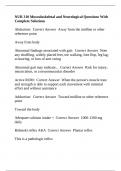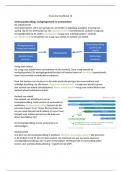Exam (elaborations)
NUR 310 University Of Alabama - Birmingham -NUR 310 Musculoskeletal and Neurological Questions With Complete Solutions
- Course
- NUR 310
- Institution
- University Of Alabama - Birmingham
NUR 310 University Of Alabama - Birmingham -NUR 310 Musculoskeletal and Neurological Questions With Complete Solutions
[Show more]




